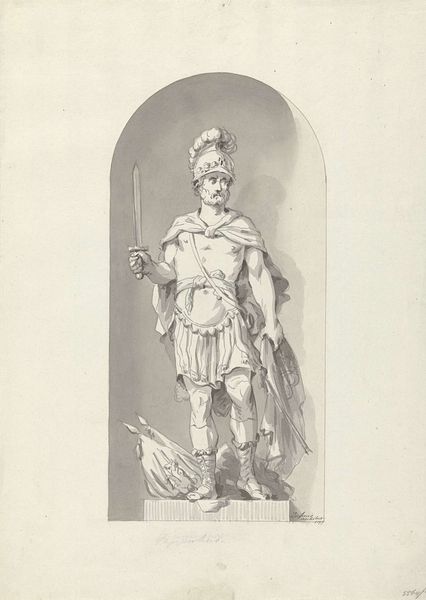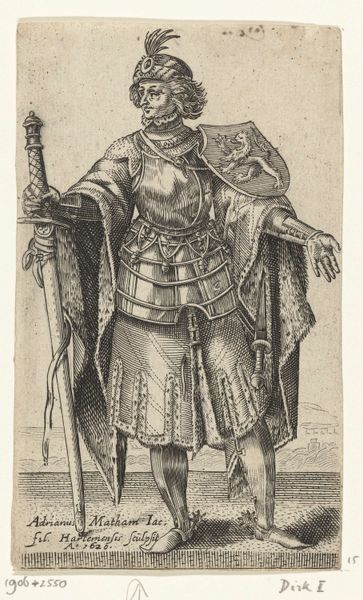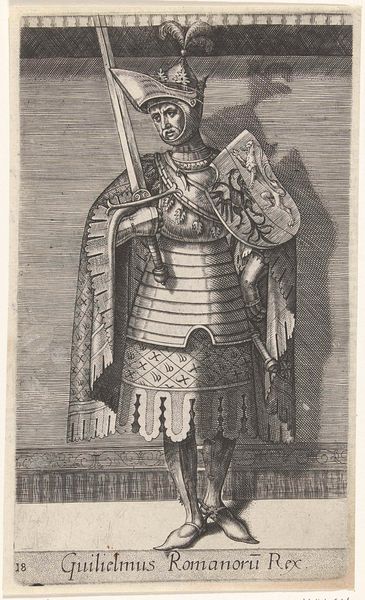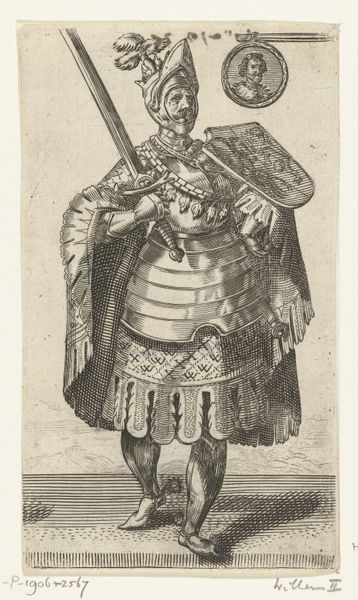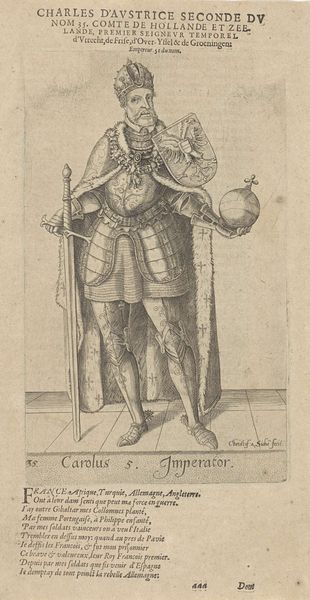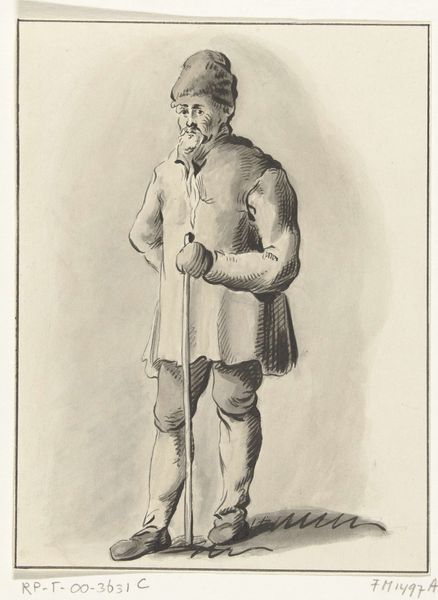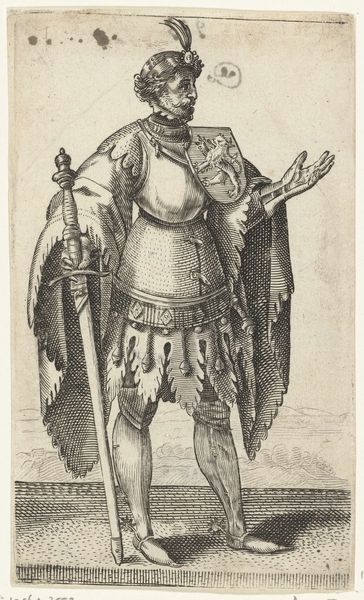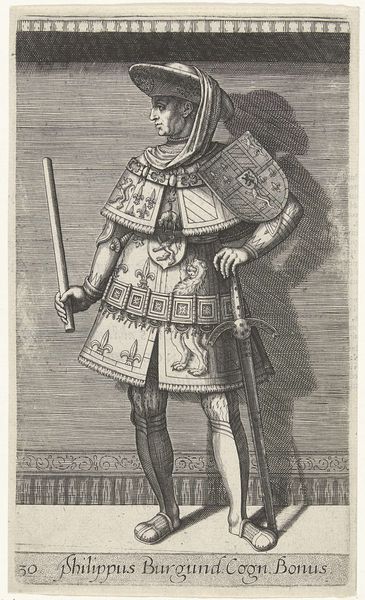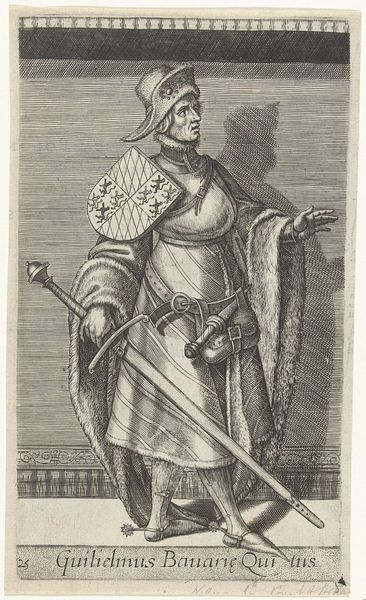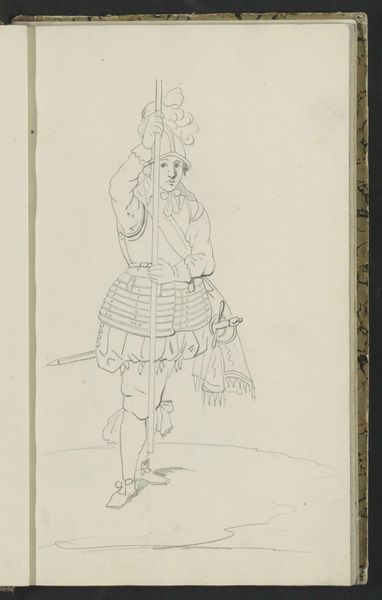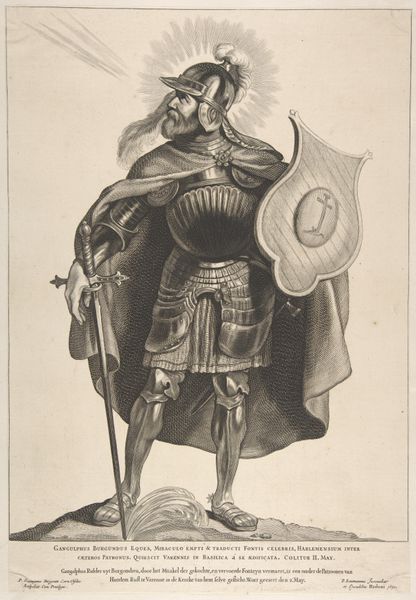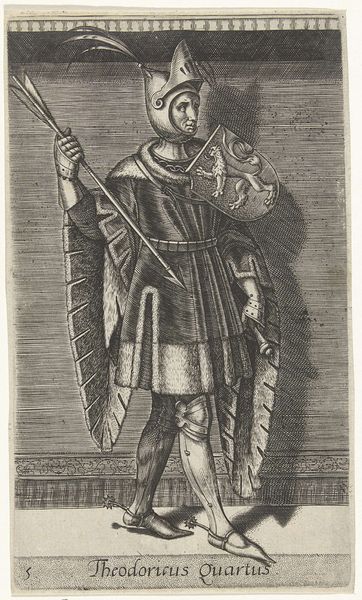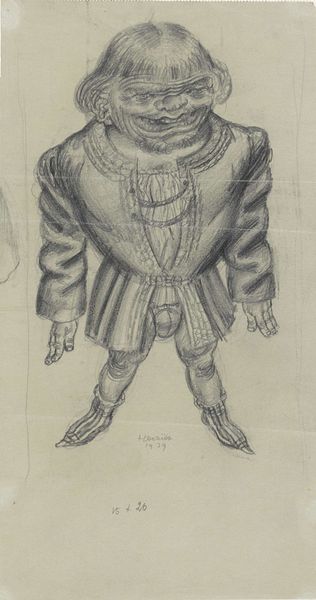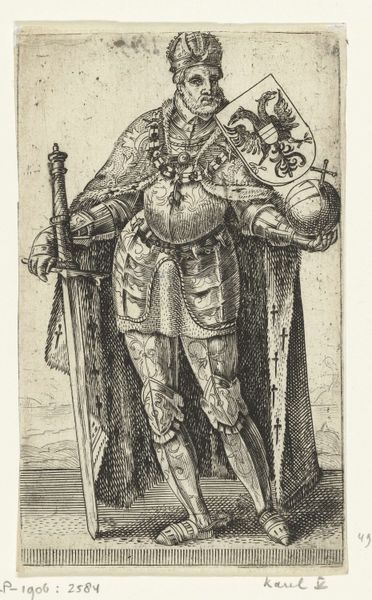
Dimensions: 24.2 x 15.2 cm (9 1/2 x 6 in.)
Copyright: CC0 1.0
Curator: Here we have John Singer Sargent's "Pyrrhus, after the Antique," a pencil sketch currently held at the Harvard Art Museums. Editor: It's striking how the sketch captures such a monumental presence with such delicate lines. The use of graphite gives it an ethereal quality, almost like a ghost of empires past. Curator: Indeed. Sargent's choice to depict Pyrrhus, a king known for Pyrrhic victories, adds layers of meaning. Consider the symbolic weight of a leader whose triumphs led to near self-destruction. Editor: And the antique sculpture itself, reproduced by Sargent, is a copy of a lost Hellenistic original. We see the echoes of copies, each distancing us further from the source. Curator: The statue is Pyrrhus as Roman emperor, not Greek king. It’s like a snake eating its own tail, as Rome appropriates Greek civilization even as its military might outstrips it. Editor: I appreciate the attention to texture in the armor and the helmet's crest. It provides a tangible sense of history, despite the sketch's lightness. Curator: Sargent is also suggesting Pyrrhus's armor is also the costume of an actor, because what remains of Pyrrhus is his legend, a drama re-enacted across the millennia. Editor: That reading makes me think differently about the piece. It's a powerful reminder of how art can become a vessel for historical reflection. Curator: It is a glimpse into the past but, as always, reinterpreted through our present.
Comments
No comments
Be the first to comment and join the conversation on the ultimate creative platform.
